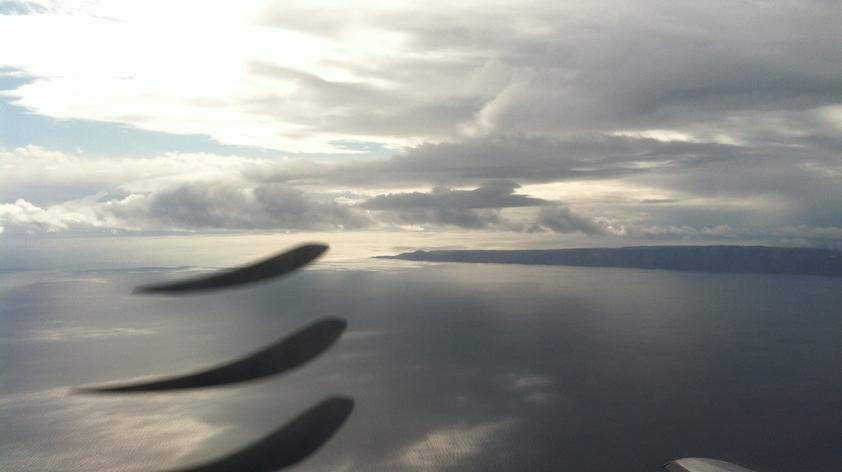
A rad day on San Clemente Island
One of the most crucial aspects of caring for zoo-housed wildlife is providing regular veterinary care to ensure the animals are in good health. In any situation, this poses a number of challenges, but an extra level of difficulty is added when the animals are isolated from the Zoo's hospital facilities.
Welcome to life on San Clemente Island, located about 65 miles off the coast of San Diego. This Navy-owned island is home to the San Clemente Loggerhead Shrike, an endangered subspecies of carnivorous songbirds found only here. It's here that the Institute for Conservation Research maintains a small flock of these birds, who are bred to be released to supplement the wild population.
Like all zoo-housed animals, providing health care is one of the most important things we do for these birds. While we have the means to deal with simple medical issues and routine check-ups, we lack the equipment of a full-blown hospital when more complicated procedures are necessary.
So, when vets wanted radiographs of 15 geriatric birds, and birds with chronic health issues, we knew there was only one solution. Bring the hospital to us!
Fortunately, we didn’t need the whole hospital, but the equipment necessary to take x-rays isn’t exactly easy to transport across an ocean. The small passenger planes that fly us to and from the island restrict carry-on weight to 20 pounds per person, adding another kink to logistics. Therefore, to get 135 pounds of heavy equipment out to the island we enlisted the help of the Institute for Wildlife Studies, another organization on the island, whose work requires a plane for conducting aerial surveys of island foxes. They carefully stuffed their plane with all the machines, computers, and duffle bags of supplies, and we awaited its arrival.
Once the two Zoo veterinarians and two registered veterinary technicians (RVTs) arrived and began setting up, the shrike team quickly split into teams to start catching birds from their field aviaries. As an Aviculture Volunteer, and the newest member of the team, my job was pretty simple: I stood near the back of the enclosure, slowly waving a long net back and forth to encourage the bird to fly to the designated catchers. Simple yet effective, and I appreciated the chance to work closely with the birds and learn from the experienced staff. With birds safely in carriers, we were ready to transport them up to the facility.
Once we arrived at the examination area, both the hospital team and the shrike crew flew into action.
Through the initial chaos of having so many people in the room, a system quickly emerged. Someone removed the bird from the carrier. Someone prepped the machines. Someone recorded the exam notes. Everyone took another sip of coffee.
Then, the bird was passed to an RVT and placed under anesthesia, but not without first having to modify the mask used to administer the gas since it was far too large for a shrike beak—"adapt and overcome” was the theme for this trip.
Once anesthetized, the bird was carefully positioned on radiograph plates. Radiographs were taken from two different angles to ensure the veterinarians had the best perspective for assessing potential ailments.
Afterward, a blood sample was drawn, and the bird received a full physical exam by the vet.
Then, just like that, the bird was ready to be woken up.
Once all 15 birds were assessed and radiographed, the hospital staff disassembled their equipment, so it could be packed up and put on a plane for the second time that day.
A week later, we had full reports back from the vets. Although some of our older birds are showing signs of geriatric conditions, such as osteoarthritis and degenerative joint disease, everyone was otherwise in tip-top shape. And for these older birds that are starting to show their age, this exam will provide a baseline to help vets monitor and assess any further signs of decline that may affect their quality of life.
The health of our flock comes first in every situation, and thanks to the assistance of our zoo hospital staff, even our oldest birds can stay healthy and active for years to come.
Madison Thorne is an Aviculture Volunteer.













